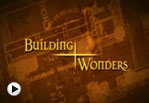Investigating Plans and Maps
Support materials:
Questions to ask
- Discuss the purpose of plans and maps. Have they always been used for the same reasons?
- Early examples can look more like drawings. Discuss why this is and how and why modern versions are different to historical versions?
- Why are plans and maps made and what information can be obtained from them both now and in the past?
- Discuss and interpret the terminology/vocabulary commonly used when working with plans and maps.
- Discuss the reliability of plans and maps as a historical source and what this can tell us about the importance of using more than one source of evidence.
- Take into account: the cartographer, who they were working for, motives, political climate, national and international events, e.g. creation of the Floating Harbour, relocation of the City Docks to Avonmouth, World War II, etc.
- Compare a plan or maps to another historical source of information about the same location. What are the differences and similarities?
- Ordnance Survey maps (OS) did not begin until the 1880s and have continued to the present day. Using OS maps can help to trace the growth and development of an area. Use a modern OS map and compare to a historical OS map that includes the Floating Harbour and discuss how the area has changed and what has stayed the same.






